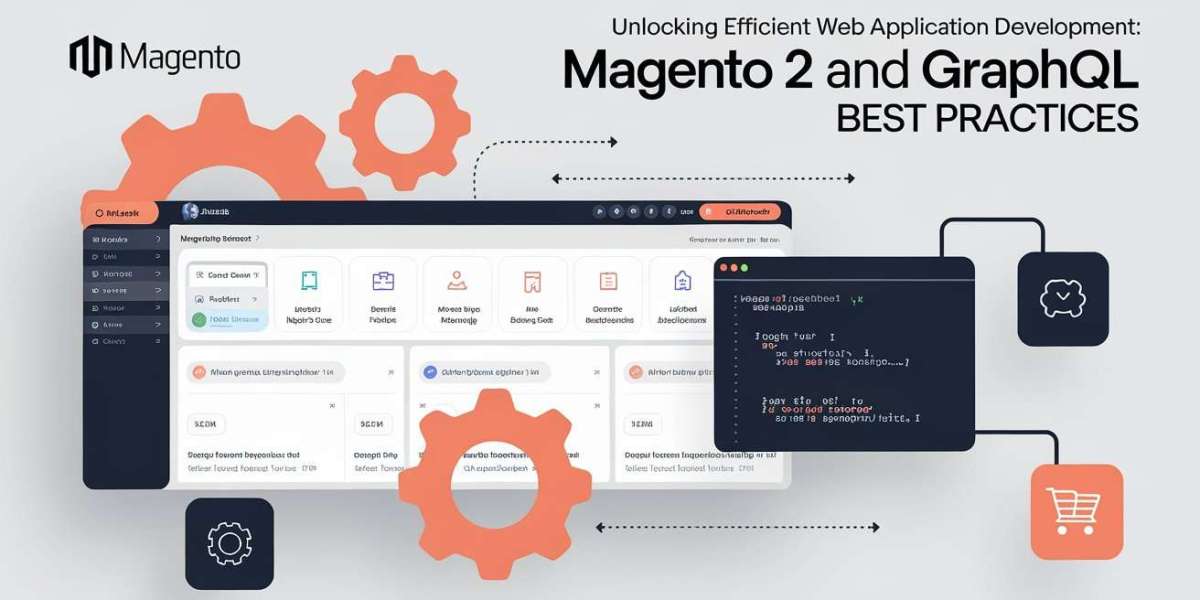In the rapidly evolving landscape of e-commerce, the need for robust, scalable, and efficient web applications has never been greater. Magento 2, one of the leading e-commerce platforms, has evolved to meet these demands by incorporating GraphQL, a powerful query language for APIs. This combination not only enhances performance but also streamlines the development process, allowing developers to build dynamic and responsive applications tailored to their business needs.
In this blog post, we will explore how Magento 2 leverages GraphQL to facilitate efficient web application development. We will delve into the benefits of using GraphQL with Magento 2, practical implementation strategies, and tips to optimize your development workflow.
Understanding GraphQL
Before diving into Magento 2's integration with GraphQL, let's briefly discuss what GraphQL is. Developed by Facebook in 2012 and released as an open-source project in 2015, GraphQL is a query language for APIs that allows clients to request only the data they need. Unlike traditional REST APIs, where multiple requests may be required to gather related information, GraphQL enables developers to fetch all required data in a single query. For businesses looking to implement such advanced integrations, partnering with a Magento Development Company can help you streamline the process and fully leverage GraphQL within your e-commerce platform.
Key Features of GraphQL:
- Single Endpoint: GraphQL APIs operate through a single endpoint, simplifying the structure and reducing the complexity of API management.
- Efficient Data Fetching: Clients can specify exactly what data they need, avoiding over-fetching or under-fetching of data.
- Strongly Typed Schema: GraphQL APIs are defined by a schema that outlines the types of data available and the relationships between them, which enhances type safety and documentation.
- Real-time Capabilities: GraphQL supports subscriptions, allowing applications to receive real-time updates, which is particularly useful for dynamic e-commerce platforms.
Benefits of Using GraphQL with Magento 2
Integrating GraphQL with Magento 2 offers several advantages that enhance the development process:
1. Improved Performance
GraphQL minimizes the number of requests needed to fetch data, significantly improving the performance of web applications. By allowing developers to specify the exact data requirements, GraphQL reduces server load and network traffic, leading to faster response times and an enhanced user experience.
2. Enhanced Developer Experience
With a strongly typed schema, developers benefit from auto-completion features and better documentation. This makes it easier to understand available data types and relationships, which can accelerate the development process.
3. Flexibility and Scalability
GraphQL’s flexible data retrieval capabilities enable developers to build more scalable applications. As business requirements evolve, developers can easily adjust the queries without needing to modify backend code, allowing for rapid iterations and updates.
4. Simplified Integration
GraphQL’s single endpoint architecture simplifies the integration of third-party services and APIs. This is particularly beneficial for businesses looking to incorporate various services, such as payment gateways, shipping providers, and CRM systems, into their Magento 2 applications.
Implementing GraphQL in Magento 2
Step 1: Enable GraphQL in Magento 2
Magento 2 comes with built-in support for GraphQL, but it may need to be enabled in the configuration settings. Follow these steps:
- Log in to the Magento 2 Admin Panel.
- Navigate to Stores > Configuration > Services > GraphQL.
- Set the Enable GraphQL option to “Yes” and save the configuration.
Step 2: Understanding the GraphQL Schema
Magento 2 provides a comprehensive GraphQL schema that includes types for products, categories, customers, and orders. To explore the schema, you can use GraphiQL, a user-friendly interface for querying GraphQL APIs.
- Open your Magento 2 store URL with the /graphql endpoint.
- Use GraphiQL to explore the available queries and mutations.
Step 3: Writing Queries
GraphQL queries allow you to fetch specific data. For example, to retrieve a list of products, you can use the following query:
{
products(filter: { sku: { eq: "your-sku" } }) {
items {
id
name
price {
regularPrice {
amount {
value
currency
}
}
}
}
}
}
This query fetches the product ID, name, and price based on a specific SKU, allowing developers to customize data retrieval as needed.
Step 4: Using Mutations for Data Manipulation
In addition to queries, GraphQL allows for data manipulation through mutations. For example, to create a new customer, you can use the following mutation:
mutation {
createCustomer(
input: {
email: "customer@example.com"
firstname: "John"
lastname: "Doe"
password: "password123"
}
) {
customer {
id
}
customerUserErrors {
message
code
}
}
}
This mutation creates a new customer in Magento 2 and returns the customer's ID and email address upon successful creation.
Best Practices for Efficient Development
1. Optimize Queries
To enhance performance, always fetch only the data required for your application. Avoid over-fetching by specifying fields explicitly in your queries.
2. Use Batching
GraphQL supports batching, allowing multiple queries to be executed in a single request. This can significantly reduce network latency and improve performance.
3. Leverage Caching
Implement caching strategies to minimize repetitive data fetching. This can be achieved by utilizing caching mechanisms in Magento 2 or implementing client-side caching for GraphQL responses.
4. Monitor and Analyze
Regularly monitor the performance of your GraphQL queries and analyze response times. Tools like New Relic or Google Analytics can help identify bottlenecks and optimize query performance.
Conclusion
Integrating GraphQL with Magento 2 offers developers a powerful toolkit for building efficient and scalable web applications. By leveraging the strengths of GraphQL—such as improved performance, flexibility, and a simplified integration process—developers can create dynamic e-commerce experiences that meet the demands of modern consumers.
By following best practices and utilizing the robust capabilities of Magento 2 and GraphQL, businesses can position themselves for success in the competitive e-commerce landscape. As you embark on your development journey, embrace the power of GraphQL to streamline your processes and enhance the user experience. For expert assistance and to ensure seamless implementation, consider hiring Magento developers who specialize in integrating GraphQL for optimized performance and scalability.



